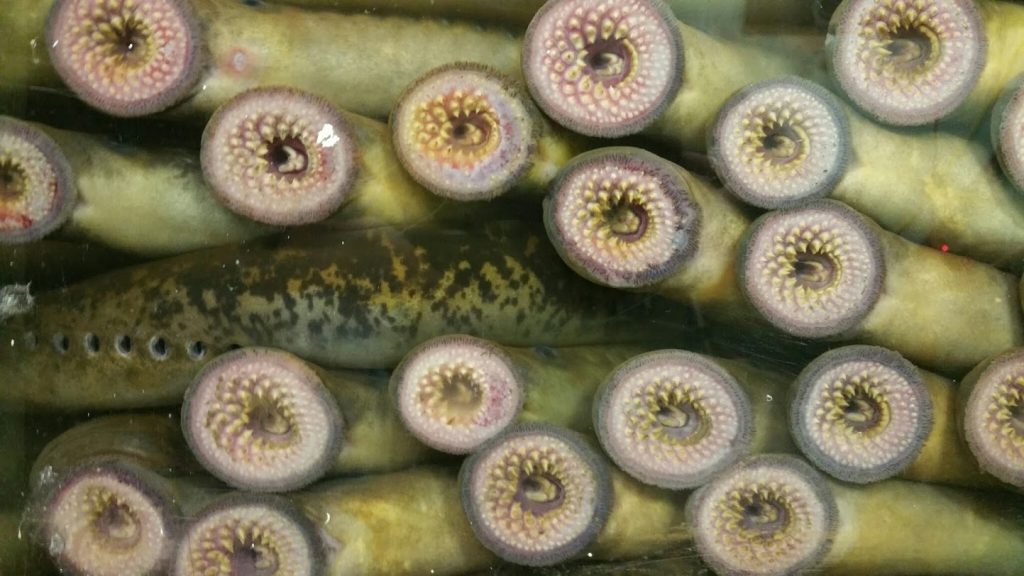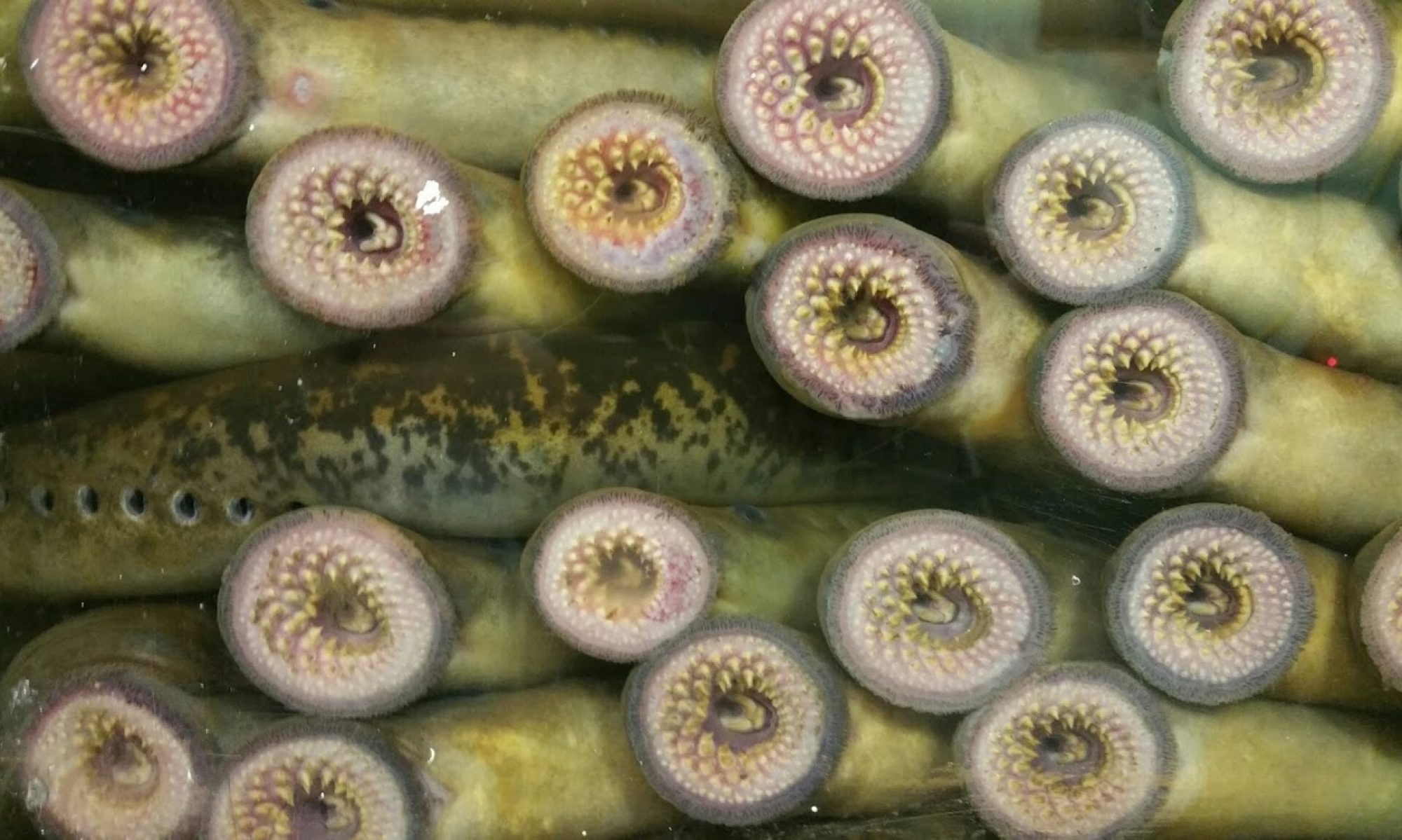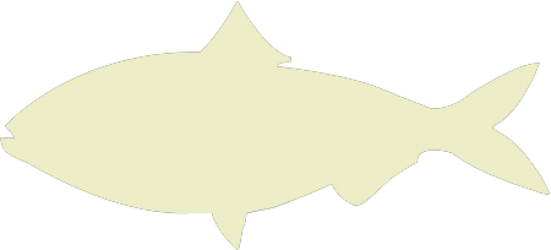Common Name(s): Sea lamprey, eel sucker, green lamprey, lamprey eel, spotted lamprey, sucker
Species Name: Petromyzon marinus
Type of Diadromy: Anadromy

Appearance
Adult sea lamprey can grow as long as 48”, but the average lamprey is closer to 24”. At first glance they look similar the American eel, Anguilla rostrata: both are long, slender, and have small eyes. But, the sea lamprey has no ribs, no paired fins, no jaws, and has seven pairs of gills. They also differ in color. Sea lamprey tend to be mottled green, brown and black on top and white on the bottom. The most distinguishing feature is the mouth. Lamprey don’t have a jaw, instead their mouth has 11-12 rows of teeth arranged in circles. This design allows them to attach to fish and hold on while rasping a hole to feed.
Range
The sea lamprey has a very wide distribution, occurring on the east coast of North America from Labrador, Canada as far south as Florida, across the Atlantic throughout eastern Europe from Varanger Fjord in Norway in the north and south west to the Mediterranean (Hardisty and Potter 1971; Renaud 1997).
Life History
Spawning season varies from north to south, occurring from March through September . Spawning peaks when water temperatures reach 17 to 19oC (Applegate 1950; Beamish 1980). Sea lamprey construct gravel nests in riffles that can be 25 to 50 cm deep. Males and females build the nest nest together, carrying stones with their mouths. Fecundity is fairly high for a freshwater species, with females producing an average of 230,000 eggs (Applegate 1950; Beamish 1980). Like Pacific salmon, sea lamprey semelparous – they die after spawning. Eggs hatch within two weeks and the small larvae move into still water to burrow into the muddy bottom (Hardisty and Potter 1971). Larvae remain in the buried, filter feeding, for the next six to eight years (Beamish 1980).
The transition from larvae to juveniles takes four to six months, during this time they develop teeth and eyes. Once complete, the juveniles emerge from the mud and begin migrating to the sea, attaching to other anadromous fish on their way out of the river such as shad, alewives, and salmon. At this age they are most likely attaching to fish for transportation, and not feeding on them. If you pull a lamprey off another fish, you will probably see a superficial wound and not a hole in the flesh.
Young adult sea lampreys are known to feed on alewife, Alosa pseudoharengus, shad, Alosa sapidissima, and White suckers, Catostomus commersoni (Potter and Beamish 2010). One population was observed to begin a downstream migration in the fall to an estuary where they fed on Menhaden, Brevoortia tyrannus, during the winter (Mansueti 1962). In the spring, they attached to anadromous fish to move back into the rivers.
Management
No commercial or recreational fishery for sea lamprey exist at this time, so fisheries management is not occurring. However, their introduction into the Great Lakes in the early 1900’s resulted in the collapse of several other important fisheries. The Great Lakes Fishery Commission was established in 1955 and one of the main goals was to control the invasive sea lamprey. To combat the invasives a massive chemical control effort occured in the 1950’s, reducing sea lampreys by 90 percent in the Great Lakes. They continue to be a problem today.
Fishing regulations for each state may vary – check your local regulations for accurate information.
New & Stories
References


